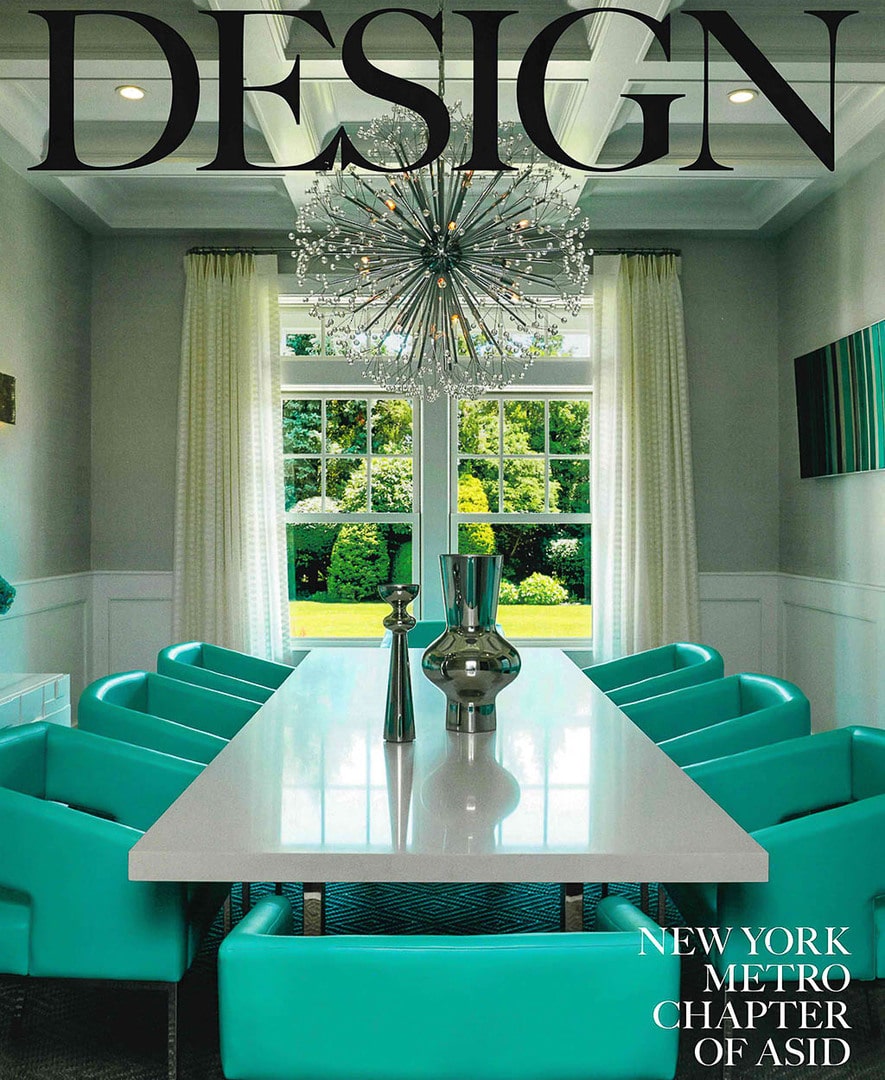ASID NY METRO
NEW YORK METRO ASID
SUMMER 2019
The Art Adventure:
Taking a Project from Good to Memorable
by Glenn Gissler
Photography by Gross & Daley
My personal adventure with art began decades ago in a suburb of Milwaukee, Wisconsin. In my local high school I was fortunate to take eight semesters of art with outstanding teachers. I learned about art history, experimented with many art-making techniques and became a member of a tribe of art freaks—it was the 1970s.
For us, Art was an adventure worth living! For me, this interest, passion, even affliction, has been a big part of my life ever since. Now, after many years of college study, countless experiences making, seeing and living with art, traveling across the US and Europe for art-centric travels I have found that Fine Art is the single most important ‘character lending’ element of interior design and can take a project from good, to memorable!
Some thoughts on Art
Fine Art can be MUCH more than just decoration. In addition to visual delight, Fine Art can bring cultural, historical intellectual and philosophical meaning to an environment and can impact the way we see and experience the world.
The primary reason to own and live with art is the immeasurable richness it can add to life, and while art can increase in value—enjoyment should be the primary goal. That said, many of my client’s acquisitions have increased in value, some substantially!
Context deeply informs the experience of Fine Art. For me the ubiquitous all white gallery walls is not a neutral environment to see and experience art, and I’m often delightfully surprised how much better art can look in a home.
“Many people have asked me how they can learn more about Art in New York City.”
The first thing is you need to put in the time. LOOK at and EXPERIENCE ART! Go to museums! New York City has some of the best museums in the world with remarkable collections and exhibitions—this is one of the reasons I moved here, and I try to integrate regular art viewing into my schedule—great for dates, fun with friends and can be a starting point for other activities for your days, or nights.
Go to art galleries!
There are literally hundreds of galleries in New York City whatever your interests are—while your budget may not allow for buying ‘blue chip’ looking is free and seeing the best to help educate your eye, and your taste.s
Go to auction previews!
New York City is home to some of the most important auction houses in the world and they have previews for nearly every auction; they are free and there are always experts on-hand to answer your questions. Sothebys, Christies, Bonhams and Philips regularly have auctions—learn what the categories mean to narrow your focus on what really interests you.
Go to art fairs!
Art Fairs have become an increasingly important venue to see and purchase art; and New York City has a lot of art fairs. While it can be a fantastic “shopping opportunity” because you can see a lot of art from a lot of galleries all under one roof, they can be overwhelming experiences. Unfortunately, art fairs are really not great places to have a ‘high Art’ experience as the purpose is less about art and more about “art commerce,” and they can be incredibly crowded making viewing and access to the dealers themselves a challenge.
Sign up for mailing lists!
Museums, art galleries and auction houses all have mailing lists that will alert you whenever there is a new exhibition, openings and other special events.
Read the ARTS Section of the newspaper, purchase books, and magazines!
I always want to learn more when an experience or artist moves me. I often purchase museum catalogues, gallery exhibitions catalogues, or monographs.
The Friday ARTS Section of the New York Times is an excellent way to learn what is going on as well as the Sunday Art Section, and magazines such as Art Forum or Art News can alert you to exhibitions, or offer some in depth stories.
And for a comprehensive overview of what is on view right now, pick up a Gallery Guide or go to www.Galleriesnow.net.
Glenn Gissler, ASID is past president (2017-2018) of the ASID NY Metro Chapter and Principal of Glenn Gissler Design


